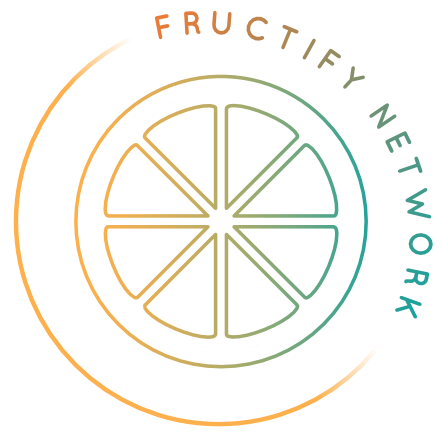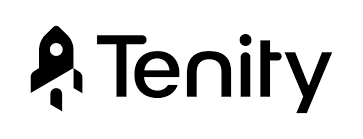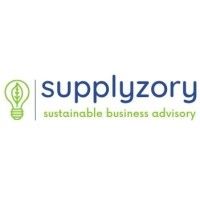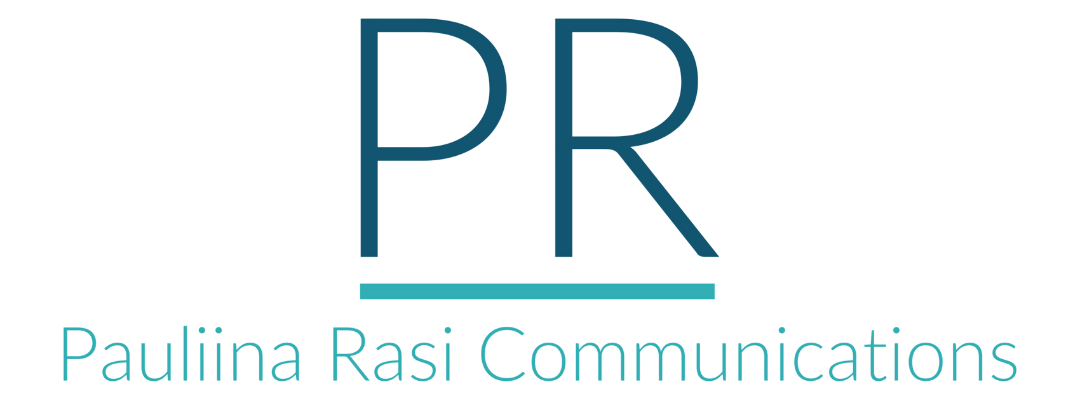Nov 10
/
Karina Mereuta
Expert Corner - Discussion with Katja Rieger, Founder of RippeEffect on how to deal with the 'S' from ESG
About Katja and her professional background
"After 17 years in corporations, I followed my passion and founded my own business: training & consulting for organisations to align their strategy and culture, to create credible change journeys, inspiring leadership and environments that are great to work at!
Having worked across 5 continents (Europe, Asia, Australia, US and Africa) mostly for GE and Swiss Re, I have become invested into ESG, because it is the foundation for sustainable businesses, that are profitable, responsible and have a positive impact.
Helping organisations on this journey is my privilege. "
Now read the fruitful conversation between Katja and Karina, our Co-founder
Q1: Katja, you have been trainer for companies and teams and you have been working hands on to empower leadership towards change. Where do you see most resistance? And least resistance as well?
A1: It is quite interesting that on the one hand there is more and more evidence, that proves, that good leadership and responsible organizations perform better. Yet the reality, the every day workplace does not demonstrate it (yet?)
Good leadership today is defined as appreciative, empowering, safety providing and inclusive, to name just a few important traits. It stands on contrast to a transactional, controlling, hierarchical approach.
Most leaders I speak with would like to be such a leader, yet sometimes they don’t know how, more often they fall back into old behaviours like controlling or blaming without being aware, because the feedback culture, especially up in the hierarchy, is lacking.
In many surveys how leaders see themselves and how they are seen differs in quite some percentage points. The same applies to states sustainable goals and the day to day decision making. Everyone embraces sustainability, but when there is a dilemma we fall back on what is safe and has always been the goal: short term profit.
A simple solution for his is to foster safety to create transparency and an active feedback culture.
Q2: I know that you are a promoter of neurodiversity as a “niche” of diversity & inclusion. What is your personal experience with the benefits of neurodiversity for companies?
Q2: I know that you are a promoter of neurodiversity as a “niche” of diversity & inclusion. What is your personal experience with the benefits of neurodiversity for companies?
A2: Neurodiversity, a personal passion of mine, is a movement that embraces people who are cognitively different like autistics, dyslexics, people with ADHD.
It states that:
- differences are a fact of life and neither bad nor good initially
- the differences sometimes come with challenges and barriers that need to be overcome. And they come with strengths that benefit us all. Especially with regards to the skills of future of work.
- Inclusion to enable neurodiverse people to contribute better, benefits all minorities as well as neurotypicals and brings better results.
I have seen an autist behave differently at work – didn’t go to lunch with others, didn’t look people in the eyes, needed exactly spelled out direction. And his career suffered.
Yet, whatever he delivered was flawless, detailed and well beyond expectations. With a bit more awareness, empathy and curiosity in the organizational mindset we can benefit much more from this kind of talent. On the bright side some years back, my manager said: „btw I am dyslexic, so don’t mind, if there are spelling errors. I appreciate, when you catch them“.
Yet, whatever he delivered was flawless, detailed and well beyond expectations. With a bit more awareness, empathy and curiosity in the organizational mindset we can benefit much more from this kind of talent. On the bright side some years back, my manager said: „btw I am dyslexic, so don’t mind, if there are spelling errors. I appreciate, when you catch them“.
People should not have to mask at work. It takes valuable cognitive processing power away from work. And in a safer, more inclusive environment no one has to mask, which creates great teamwork.
Q3: Social – the S in the ESG – what would be some concrete steps for a company to “solve” this sustainability issue and to create real change?
Q3: Social – the S in the ESG – what would be some concrete steps for a company to “solve” this sustainability issue and to create real change?
A3: As for the S in ESG, it should always start internally. When an organisation doesn’t care about health & safety, D&I, fair pay or talent management, none of their external efforts will be credible.
Externally a company should tie their ESG efforts to their business purpose and strategy. Patagonia supports outdoors, Nike supports athletes, Sonova supports deaf artists …
My advice for any company starting on the journey: start focused, even small. Yet start with a journey in mind. And build your processes every year in depth and breadth organically.
Q4: Where do you, as a consultant, find most resistance from your clients?
Q4: Where do you, as a consultant, find most resistance from your clients?
A4: Most resistance comes from lack of knowledge and understanding that sustainable practices don’t cost more than what linear economy practices cost, as long as we aren’t comparing them to exploitative practices and as long as they find all those waste streams that they should turn into revenue streams in collaboration with other companies.
Similarly, they have this common misconception that sustainability is soooo complex and they need huge consultancy help for a lot of money. It is not true. Especially for SMEs, there are many, free or very inexpensive ways of gathering knowledge that can help them through the key stages of the change.
Essentially the biggest problem is that people compare sustainable practices and prices/cost to unsustainable practices (linear supply chains), where the real cost of ownership has never been published by the companies (real cost of ownership would include the impact of the product and the cost attached to regenerating that impact on both environment and society). So the comparison will always fail as we aren’t comparing apples to apples. We are oblivious to the real cost of food or other products we consume as society.
So that’s what companies now need to correct. Both by internalising the costs that were earlier externalised and sharing the true price of products/services, and by making the true comparison of sustainable & unsustainable supply chain practices accordingly. They will see that sustainable supply chains are much cheaper.
Q5: What frameworks do you recommend measuring social metrics?
So that’s what companies now need to correct. Both by internalising the costs that were earlier externalised and sharing the true price of products/services, and by making the true comparison of sustainable & unsustainable supply chain practices accordingly. They will see that sustainable supply chains are much cheaper.
Q5: What frameworks do you recommend measuring social metrics?
A5: For the sake of transparency and comparability, I am a fan of internationally recognized frameworks. Yet the devil is in the detail. Fortunately, the organizations have many internal metrics already available. How many days were people trained, how many minorities do you have and how do they get promoted, any health or safety incidents are all already kept and can be reported on. And don’t forget the journey aspect: year by year improvement based on the original baseline is important. And don’t try to make the numbers look pretty. Your credibility is on the line.
Q6: CSR of the past has failed to keep it’s promise exactly in the “social” and “responsibility” parts. Where do you see most challenges for companies to apply the social responsibility? Do you have any specific recommendations?
A6: The temptation for companies in the past lied in the public acceptance of lack of transparency and lack of accountability. This is a thing of the past. In the short time we are talking about ESG reporting, there have been various reports on e.g. funds that were greenwashing, the latest example was across Germany and the result was pretty disappointing. Transparency is the way forward and many institutions are moving towards common and global standards.
However challenges remain in particular in the motivation why companies start on their ESG journey. To become truly sustainable (and not get tempted by cynical tick the box exercises) the leadership – board and C-Suite – needs to tie their ESG strategy to their business strategy. They will need to to do, because they truly want a sustainable, responsible business.
And once they see positive results from their activities, they will continue. I recall a discussion with a business leader from a reinsurance company. Initially he was quite cynical about the diversity efforts of his company. Today he is a great champion of women in business, because he saw first hand the great results some of the newly appointed women delivered.
My recommendation is, that leaders get actively involved to champion different metrics and get to experience the impact directly.
Q7: Moving towards the ESG as the CSR reloaded: what learnings can be applied in the new paradigm?
Q7: Moving towards the ESG as the CSR reloaded: what learnings can be applied in the new paradigm?
A7: I actually see ESG as the reporting of CSR – and with it it is a continuation of a journey of transformation. The biggest enemy of change is lack of credibility and I believe that is, where ESG comes in. Transparent and hopefully soon standardized reporting.
Social norms are changing as we speak. The need for change becomes more urgent and more accepted. Consumers are rewarding companies with purpose – not all across the board just yet, but companies cannot afford to be the last ones, because they may become irrelevant. And the first adopters already reap the benefits in customer loyalty, in better sales and better NPS.
Trista Bridges is a sustainable business expert who works with companies worldwide to develop and implement business strategies that integrate ESG and sustainability into their strategy and operations. Trista’s unique approach enables businesses of all sizes to better manage risks, boost innovation, and drive growth. As cofounder of the sustainability advisory firm Read the Air, Trista brings practical knowledge of how to incorporate sustainability and ESG principles into the practices of organizations of all sizes. Trista is also co-author of Leading Sustainably (2021), a practical guide for managers at all levels seeking to understand how to factor sustainability into their decision-making and activities. Trista holds a BSE from the Wharton School, University of Pennsylvania, an MBA from the Kellogg School of Management, and is currently pursuing a joint doctorate in business administration at Emlyon Business School and Durham University. Trista currently divides her time between Tokyo and France.
Renée is an ex-Googler with a 20-year strong corporate track record in people performance, marketing and communications, talent engagement, coaching and facilitation.
Today, she’s an independent consultant who regularly delivers a climate impact workshop for the World Wildlife Fund's Corporate Volunteering Program.
She also builds and runs footprint reduction coaching programs and is the Product and Impact Strategy advisor for Ailuna Sustainability App.
She is often invited to present, educate and facilitate discussions about personal footprint reduction at Sustainability forums and events.
Today, she’s an independent consultant who regularly delivers a climate impact workshop for the World Wildlife Fund's Corporate Volunteering Program.
She also builds and runs footprint reduction coaching programs and is the Product and Impact Strategy advisor for Ailuna Sustainability App.
She is often invited to present, educate and facilitate discussions about personal footprint reduction at Sustainability forums and events.
A background in business and economics, Niels’ curiosity took him through multiple countries and professions before finding his passion in (social) entrepreneurship and in Switzerland. After studies at the University of St. Gallen and leadership roles at the student organisation oikos, he co-founded Impact Hub Zürich and later STRIDE learning. After becoming a father, he worked 50% during 6 years. With his kids getting older and more independent, Niels is working on a new #LearnTech startup Rflect which brings personal development to learning institutions in a scalable, high-quality and affordable way.
Pauliina Rasi has 20 years in journalism, corporate communications and PR.
"I help ambitious businesses and projects tackle the overwhelm related to all things content – so that you can express your message with clarity, speak right to the hearts of your dream clients and grow a successful business. "
"I help ambitious businesses and projects tackle the overwhelm related to all things content – so that you can express your message with clarity, speak right to the hearts of your dream clients and grow a successful business. "
Karime is a talented executive and a change leader with a robust supply chain, sustainability and business strategy background built over a 25-year work experience. She worked for global corporations, such as Delphi Automotive Systems and Unilever, where she stayed for 14 years, helping to design and implement the USLP – Unilever Sustainable Living Plan. She has led sustainability projects in emissions reduction, waste elimination, clean energy and social projects. As a consultant, Karime developed sustainable business models for insect-based food, digital agriculture, education and IT services. She also created performance management models and executive compensation frameworks linked to ESG.
Ciaran is one of the co-founders of Sustainable Pathways - a marketplace where you can find sustainability specialists, tools, templates, courses and more.
He also works with schools and SME's and specialise in
He also works with schools and SME's and specialise in
- Sustainability Impact Reports: They identify areas for improvement, then work together to develop a sustainability action plan that fits the needs.
- Workshop Facilitation for companies and schools. He has worked with companies like eBay to deliver educational workshops on sustainable business practices.
- Team Performance: With a background in performance psychology he supports companies to improve their team performance & dynamics in order to help them move quicker to implementing their sustainability solutions and climate action.
Claire helped organizations develop, implement and integrate ESG/Sustainability strategies in a transformative manner. She is a subject matter expert on climate policy and accompanies the private & public sectors on their decarbonisation and net zero journeys. Claire manages and grows the International Carbon Reduction and Offset Alliance (ICROA), a international non-profit industry association that represents best practice for credible and impactful voluntary climate action to support the transition towards a low carbon economy. She is also a B Leader and Academic Assessor for the Business and Climate Change program at Cambridge Institute for Sustainability Leadership (CISL).
Claire is a subject matter expert on climate policy and accompanies the private & public sectors on their decarbonisation and net zero journeys. Claire manages and grows the International Carbon Reduction and Offset Alliance (ICROA), a international non-profit industry association that represents best practice for credible and impactful voluntary climate action to support the transition towards a low carbon economy. She is also a B Leader and Academic Assessor for the Business and Climate Change program at Cambridge Institute for Sustainability Leadership (CISL).
At B&A, he specializes in recruiting top-tier impact and sustainability professionals for Swiss companies, ensuring they have the talent to drive meaningful change. Through ImpactCareers, he has created a platform that bridges job seekers with opportunities to make a difference. Outside of his entrepreneurial ventures, Gaudenz dedicates his time as a Coach and Mentor, guiding individuals on their personal and professional journeys.
Global Marketing Communications Leader in Financial Services and Change Agent for sustainable business and positive impact.
Changemaker enabling the definition of strategic goals, their translation into integrated plans, the implementation of derived activities and the measurement of the impact created.
Changemaker enabling the definition of strategic goals, their translation into integrated plans, the implementation of derived activities and the measurement of the impact created.
Vanessa Rueber is passionate about nature. She is the Community, Marketing and Impact Manager for Patagonia Switzerland. It is a powerful feeling to work for a company that is committed to a purpose and wants to inspire other companies to copy this model.
She sits on the board of Protect our Winters Switzerland.
She is a Canadian of Swiss nationality. She is a wife, mother and employee. She is also an athlete, a friend, a sister, a dog owner and a sustainability activist.
She is a nature lover, an outdoorswoman, an eco-lover.
She sits on the board of Protect our Winters Switzerland.
She is a Canadian of Swiss nationality. She is a wife, mother and employee. She is also an athlete, a friend, a sister, a dog owner and a sustainability activist.
She is a nature lover, an outdoorswoman, an eco-lover.
A talented executive and a change leader with a robust supply chain, sustainability and business strategy background built over a 25-year work experience.
As a consultant, Karime developed sustainable business models for insect-based food, digital agriculture, education and IT services. She also created performance management models and executive compensation frameworks linked to ESG.
She is the founder of AdvantiKA GmbH, a B Corp™ Certified boutique consultancy that helps medium-sized companies be a force for good based on responsible business action.
As a consultant, Karime developed sustainable business models for insect-based food, digital agriculture, education and IT services. She also created performance management models and executive compensation frameworks linked to ESG.
She is the founder of AdvantiKA GmbH, a B Corp™ Certified boutique consultancy that helps medium-sized companies be a force for good based on responsible business action.
Olivier Kunz has over twenty-five years’ experience as business and People & Culture (HR) Executive. In particular, he has worked in Switzerland and abroad in major companies such as Silversea Cruises, ManpowerGroup, Alcon, Ferring, SICPA, Siemens and Bon Génie. He gained knowledge in a valuable combination of family owned, listed local and global companies, with HQ in Europe and North America. He lived in Europe and Africa, with a strong personal link to Asia.
In his local, regional and global roles, he managed remotely or on site up to 100 HR professionals, and led them specifically with a focus on developing and executing talent management processes, talent pipeline mapping, career pathing and succession planning.
Olivier Kunz is a trilingual human resources professional, speaking French, German/Swiss German and English. Having gained a Master’s degree in economics from the University of Geneva, he strengthened his HR knowledge by completing training courses at CRQP (an institution specialising in HR management) in Lausanne.
In his local, regional and global roles, he managed remotely or on site up to 100 HR professionals, and led them specifically with a focus on developing and executing talent management processes, talent pipeline mapping, career pathing and succession planning.
Olivier Kunz is a trilingual human resources professional, speaking French, German/Swiss German and English. Having gained a Master’s degree in economics from the University of Geneva, he strengthened his HR knowledge by completing training courses at CRQP (an institution specialising in HR management) in Lausanne.
Marjan brings a wealth of experience to her work as a licensed coach, with over 14 years spent in international private banking and wealth management, serving ultra-high net worth clients across Europe, the Middle East, and Asia.
Combining her passion for mental well-being with her background in business, Marjan co-founded Qyro, an award-winning company based in Switzerland that provides well-being and resilience solutions to professionals.
As a certified coach and expert in stress management, business, and gender studies, Marjan offers a unique perspective to her clients, guiding them towards a more balanced and fulfilling life.
Combining her passion for mental well-being with her background in business, Marjan co-founded Qyro, an award-winning company based in Switzerland that provides well-being and resilience solutions to professionals.
As a certified coach and expert in stress management, business, and gender studies, Marjan offers a unique perspective to her clients, guiding them towards a more balanced and fulfilling life.
Experienced Global leader with deep knowledge and solid understanding of project management techniques, Risk Management accounting, reporting and audit issues.
Luca has over 20 years of experience working in Finance acquired through multinationals (Saipem, ENI, ABB) and is currently Leadership learning ecosystem community Lead at ABB. He holds a PhD in Business Administration on sustainability focus and he’s GRI Certified Sustainability Professional since 2023.
He has a wide experience on sustainability and author of two books and several papers on the subject.
Luca has over 20 years of experience working in Finance acquired through multinationals (Saipem, ENI, ABB) and is currently Leadership learning ecosystem community Lead at ABB. He holds a PhD in Business Administration on sustainability focus and he’s GRI Certified Sustainability Professional since 2023.
He has a wide experience on sustainability and author of two books and several papers on the subject.
Ekaterina has over 20+ years of executive experience in the international brands, retail, luxury, FMCG, food and travel retail industries. She worked for iconic global brands, such as Mcdonald's, serving as Corporate Vice President of Strategy and Alignment responsible for 115 markets, Dufry Group, where Ekaterina led as the CEO of Switzerland, Germany, Austria, France, the UK, Malta, and global Managing Director B2B at The Nuance Group.
She has a BBA from The International University in Geneva and an MBA from the University of Chicago Booth School of Business. In addition, she has an Advanced Diploma from ESSEC Business School in the European Board of Directors Governance.She serves on the Board of Directors of the Swiss Association of MBAs and the Advisory Board of MyFeld digital farming from Brugg, Metabloqs, metaverse Web 3 SaaS from Luzern.
She was a key player with the UN 17 Sustainable Development Goals deployed across various countries with Dufry Global initiatives. Besides, she volunteers as an Executive-in-Residence for The University of Chicago Booth alumni, current students, and the University of St. Gallen to achieve economic empowerment and mentoring.
Ekaterina is passionate about people, retail, ESG. She is a Swiss citizen, living in canton Schwyz, married and has one daughter.
She has a BBA from The International University in Geneva and an MBA from the University of Chicago Booth School of Business. In addition, she has an Advanced Diploma from ESSEC Business School in the European Board of Directors Governance.She serves on the Board of Directors of the Swiss Association of MBAs and the Advisory Board of MyFeld digital farming from Brugg, Metabloqs, metaverse Web 3 SaaS from Luzern.
She was a key player with the UN 17 Sustainable Development Goals deployed across various countries with Dufry Global initiatives. Besides, she volunteers as an Executive-in-Residence for The University of Chicago Booth alumni, current students, and the University of St. Gallen to achieve economic empowerment and mentoring.
Ekaterina is passionate about people, retail, ESG. She is a Swiss citizen, living in canton Schwyz, married and has one daughter.
Siriana has more than 15 years’ experience in the financial industry with a strong track record in customer relationship management, distribution management and leadership. She is very passionate about gender equality and the S in ESG. She has been leading the women’s network at Zurich Insurance and founded her own feminist blog Kickass Selfloving Feminists.
I'd like to hear more about the Change.Preneurs
Get more information about the concept, community and opportunities.
Thank you for your interest! We'll be in touch with all the details early next year.










